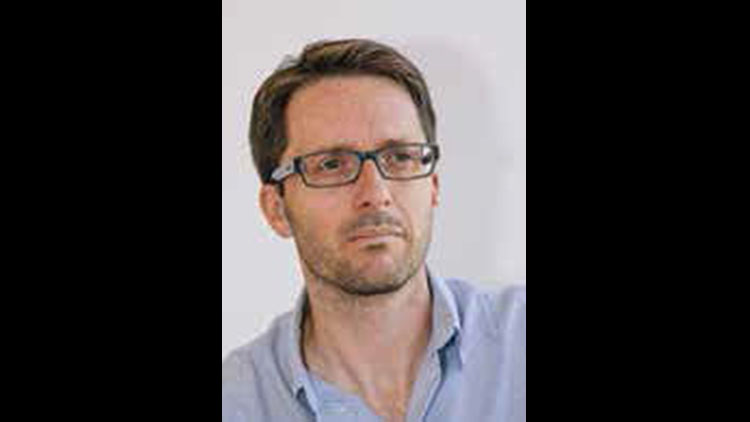
Integrated Systems Europe (ISE) has again broken its own records with an overall registered attendance increase of 11.7 percent (a whopping 73,413 visitors) year-over-year alongside its biggest-ever exhibitor total—1,192, up 204 on 2016, according to delegate registration systems and post-show surveys with attendees and exhibitors in a report published by ISE. But while the fourday annual event in Amsterdam, the Netherlands, is obviously of interest to U.S. exhibitors, why should integrators bother to make the (expensive) trip?
The widely held thinking is that though it is perfectly logical that a U.S.-based integrator would attend, he or she probably doesn’t need to bother unless there are a reasonable amount of global clients to hook up with—enough to justify the time, flights, and accommodation. So why, at this year’s February event, did an additional near-20 percent of Americans (2,333 in total) decide to make the trip—particularly when there were 14 percent less U.S. companies exhibiting (down to 152 on last year’s 176), albeit at a time when ISE enjoyed an overall 17 percent increase?
This increase in U.S. attendees (including 433 first time visitors) didn’t go unnoticed among exhibitors, and anecdotally, many U.S. integrators have been saying they definitely plan on attending in 2018. What’s changed to make 2017 what looks to be something of a turning point in this regard?
Perhaps the unrelenting growth of ISE has got something to do with it — although how that explains the downturn in U.S. exhibitors is something of a mystery. It is, after all, the largest AV systems integration show in the world and is organized as a joint venture by InfoComm International and CEDIA, the two leading industry associations for the global AV industry.
Since the inaugural, modest, and mainly residential-facing event in 2004 (I was in attendance and have rarely missed one since), ISE has continued to grow each year. For this 14th event, two new halls (14 total) and over 3,000 square meters of exhibition space helped to swell the number of exhibitors, and for 2018, there’ll be an additional, rumored-to-be-temporary, structure at the front of the Rai.
I have my own theories as to why more Americans are committing to ISE. First up, ISE now provides a broader global reach than any other pro AV show. So if you’re in the business of pro AV, it now has to be a consideration in your annual exhibitor calendar, whether it’s just a quick drive across the border or a long-haul flight from overseas. As we move into 2018 and beyond, ISE will continue to broaden its attendee reach, and increase the numbers of visitors from each attending country. In other words, as ISE continues to grow in size and scope, it will continue to grow in relevance to the AV industry as a whole. It’s too big now to be ignored and the need to attend is beginning to trump the costs in the minds of American integrators. Another reason for the increase in interest from Stateside integrators is that more and more manufacturers are treating ISE as a key launch platform for their products and services. So while ISE has always been a great opportunity to meet with clients, colleagues, etc., from Europe—and to a lesser extent, farther afield—it has more recently become a must-attend from a product perspective also. And this is only set to become more of a pull, as manufacturers inevitably follow one another’s leads.
Attached to this is the fact that brands—as well as show visitors—now view ISE as a global exhibition, and not just a European one. It is of global importance, and as such it would be counterintuitive if vendors didn’t use the event as a launchpad for their new products and services. Of course, this then becomes a self-fulfilling prophecy as both exhibitors and attendees change their view of ISE from a European to a global show.
Finally, the timing of ISE is useful, coming as it does early in the year. This alone wouldn’t be enough to boost the number of U.S. attendees, but alongside all of the above, the early February dates are beginning to prove very beneficial to the event’s growth and longevity. While the AV industry in the States and across much of the world looks to InfoComm’s U.S. event as a perfect annual midpoint, coming as it does in June, ISE now provides the perfect preview for those launches and innovations that aren’t quite ready for official launch. It’s also a great opportunity to start the year with new announcements—as well as the growing number product and service launches I mention above. ISE is a great example of European integration, and also a successful advertisement for globalization, with attendees from 177 countries attending in 2017, including most European nations. Whether it will continue to grow, as the global status quo is threatened, only time will tell. For now though, ISE can be considered an unqualified success, both in Europe, the U.S., and across the globe—a celebration of both the EU and global business as a whole (and whisper it: globalization).
Rob Lane (rob@biggerboatpr.com) is the founder/director of UK-headquartered Bigger Boat PR and enjoys moonlighting as a tech/business journalist. His PR clients are mostly in professional AV — manufacturers, integrators, and distributors — and are U.K.- or Europe-based with a global reach.
Is ISE Worth the Trip?
I had the privilege of judging several nominees for SCN publisher NewBay Media’s Best in Show exhibitor competition during ISE 2017, several of which were from the States. It was interesting to hear what they had to say about U.S. attendees.
Joseph Barbier, marketing manager for DVIGear, agrees with me that ISE provides the most global reach of all the AV events, and is also timed well in February. “Visitors from the U.S. are recognizing this and [they ’re] taking advantage of the opportunity to make connections and extend their global reach,” he told me.
Brian McClimans, vice president of sales, Americas and APAC, at Peerless-AV also agreed that there were more Americans at ISE 2017–including distributors: “Our team is definitely seeing an increase in U.S. customers, from end-users to distributers to integrators.”
Jennifer Davis, CMO and VP, marketing and product strategy at Leyard and Planar, was keen to point out that the two merged companies have treated ISE as a “launch platform” since the merger in 2015, and she reckons other manufacturers are beginning to follow their lead, helping ISE to become the global event it is now considered to be.
“We saw a record number of our North American customers in attendance this year,” she said. “Braving long flights, jet lag, and winter weather in Amsterdam is worth it!”
It is perhaps interesting that Leyard and Planar felt the need to take some of the technology highlights from its stand at ISE and show it to customers in the States in a “New Product Tour” that kicked off later in February. This again shows the importance of ISE as a first-call for products, and those Americans who wish to be ahead of the curve will likely consider making the trip to Amsterdam in 2018 to see the latest tech highlights ahead of some of their peers.
